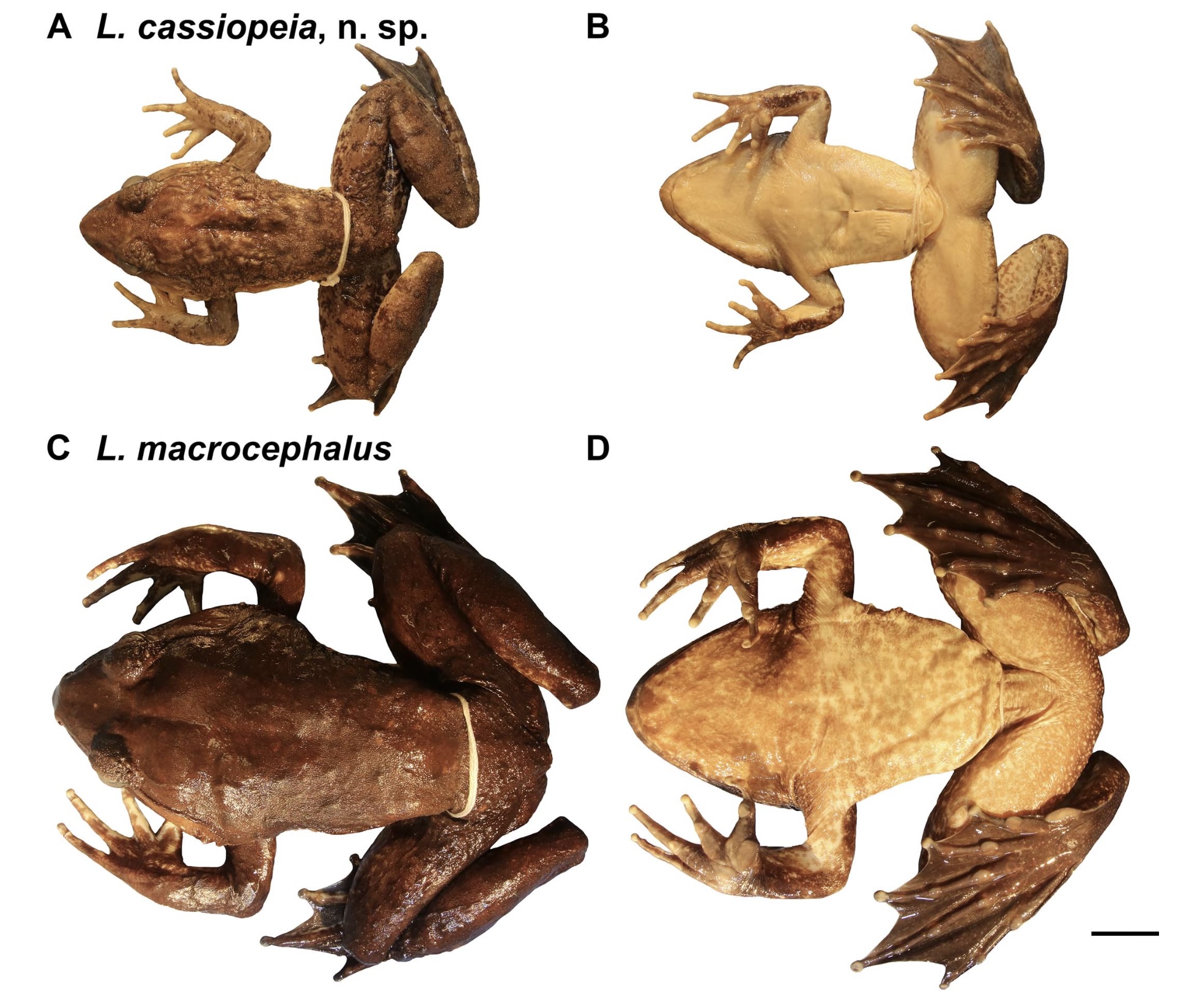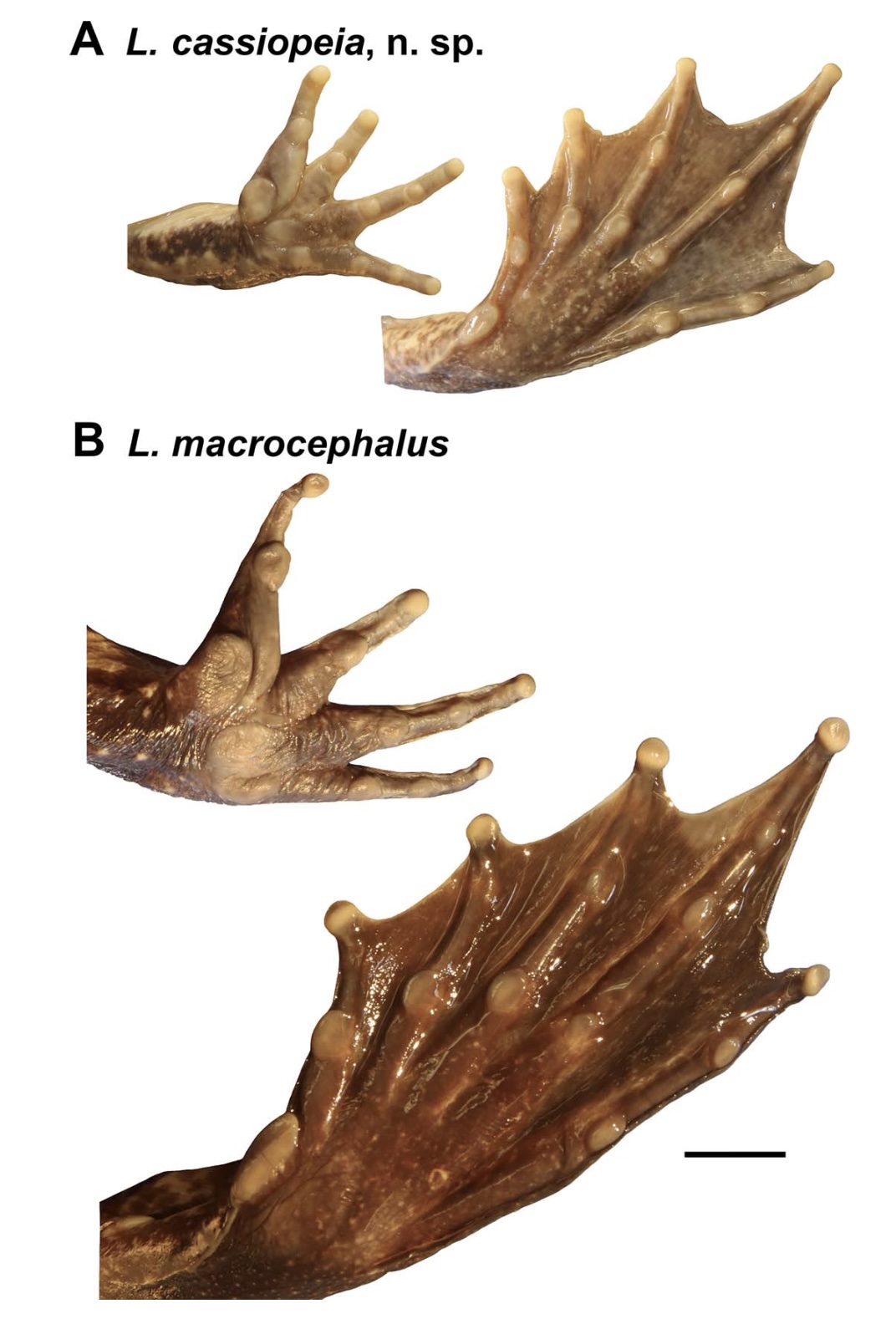Ever heard of fanged frogs? Well, over 80 species of these toothy anurans that belong to the genus Limnonectes are hopping about Southeast Asia, and now their ranks have grown even further with a new species described in the mountains of the Philippines.
At the moment there are 11 species of fanged frogs known to live in the Philippines with two species living in Luzon, the area where the new frog was found. The new species, named Limnonectes cassiopeia, has been collected lots of times over the last 20 years, but has remained hidden in plain sight as a mistaken member of the species Limnonectes macrocephalus, as it strongly resembles the juveniles.

It’s easy to see why this species was thought to be the juveniles of the larger L. macrocephalus for so long.
Image courtesy of KU researchers
“I sequenced many of them to establish a good genetic dataset, allowing me to examine their patterns of relatedness,” said lead author Mark Herr, doctoral student at The University of Kansas’ Biodiversity Institute and Natural History Museum, in a statement. “Many species were originally described, over the last century and a half, based solely on their physical appearance – before modern genetic analysis was available.
Herr noticed a different group in the data that appeared as a genetically distinct branch. This led the team to look closely at museum specimens to find the missing species. Physical appearance is a big part of the puzzle. The team made the breakthrough when they were looking at the toe disks of the frogs. Smaller, white disks indicated a different species, which was then backed up by the genetic data.

The smaller, paler toe discs of L. cassiopeia were a key breakthrough.
Image courtesy of KU researchers
“I took all the genetically identified specimens back out again and found the key character – a simple physical trait that anyone can assess in the wild. If they catch one of these frogs, they can flip it over and tell right away. Not only are the toe pads smaller, but they’re white. They’re pale, completely unpigmented, which sets them apart from the primary species, Limnonectes macrocephalus, which has dark gray pigmented toe pads,” continued Herr.
The name L. cassiopeia comes from the five-star constellation Cassiopeia, relating to the five white toe pads on the frogs. Another big physical difference between the new species and L. macrocephalus is that the new species develops the characteristic large head size much earlier as it grows than the other species.
“These males have big heads, and a lot of these frogs can be huge – some as large as chickens elsewhere in Southeast Asia,” continued Herr. “I did some measurements to determine that once the males start to reach sexual maturity, they get these big, wider heads and develop huge fangs. Sometimes, when we consider their use of fangs for combat, we see some big male Limnonectes with scars on their heads, presumably injuries from fighting. And my analysis showed that the big heads start to show up on this new genetic cluster at an overall [smaller body] size.”
Overall, the new species is more similar in size to the less widespread species found in the area, L. woodworthi, and the giant species L. macrocephalus remains the largest at adulthood.
These frog species represent an important source of protein in the diets of many of the Indigenous Filipino communities. Given that little is known about the species and whether overharvesting might affect the population, the team propose that the new species be classified as “Data Deficient” and suggest more work be carried out to determine the differences in life history between this new species and L. macrocephalus.
“Now that we know they’re different, we can go out and watch them, and study their natural history and detail. Maybe they’re doing something totally different in the wild, you know? That’s exciting for me,” concluded Herr.
The study is published in Ichthyology & Herpetology.
Source Link: New Fanged Fighting Frog Species Found Hopping About In The Philippines